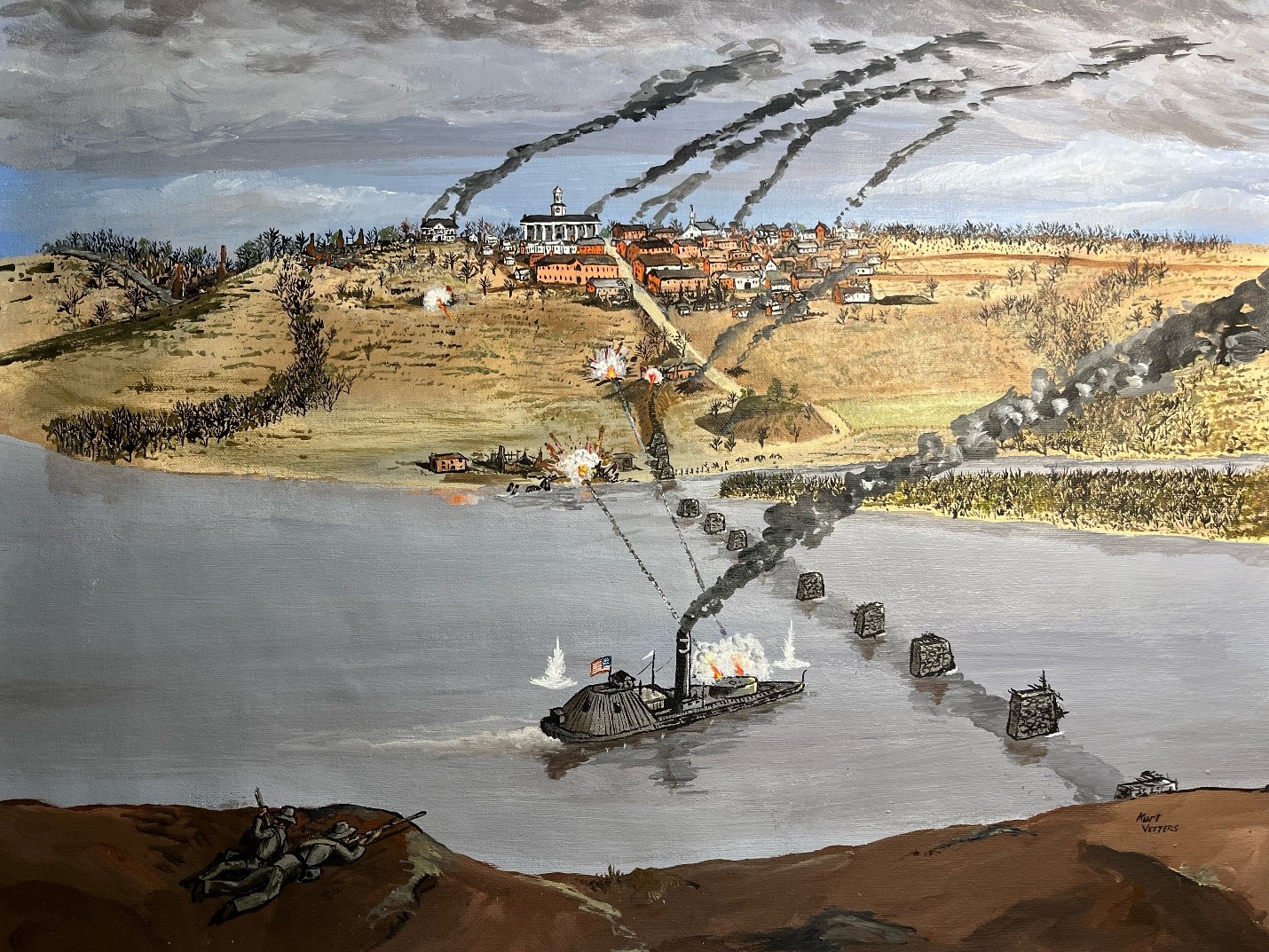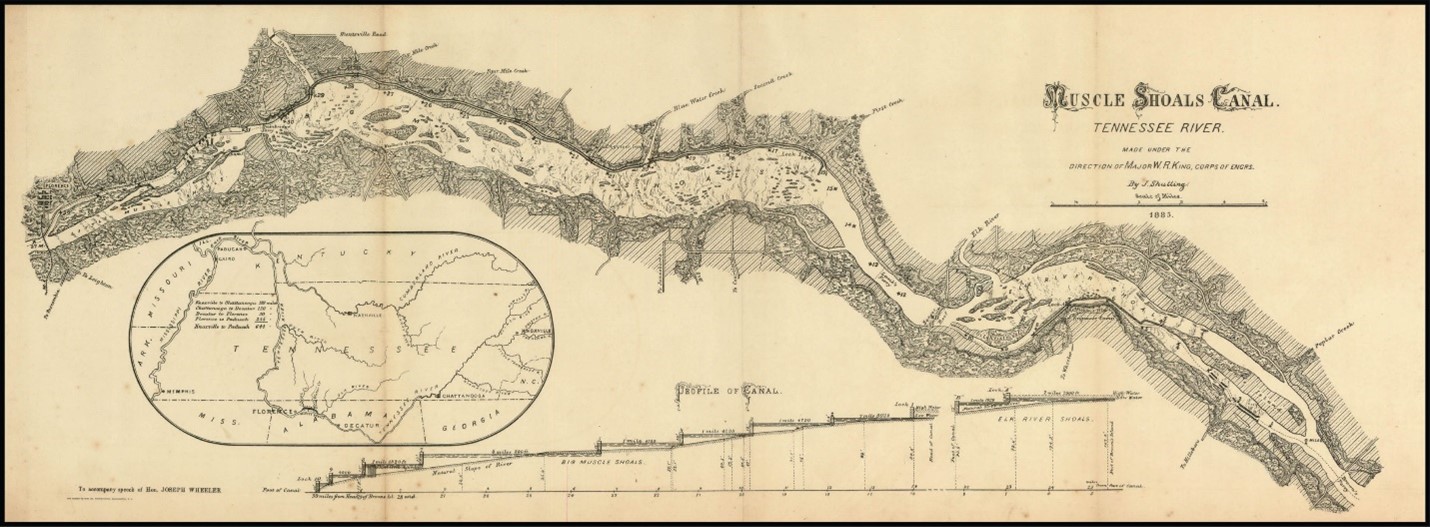By Clayton Davis
MSNHA historic preservationist
When driving across the O’Neil Memorial Bridge to cross between Florence and Sheffield, observers will notice an old iron railroad bridge sitting off to the side.
Long since decommissioned for everyday use, the remaining portion of the bridge extending from the southern bank of the Tennessee River is just over a quarter mile long. It has many names: the Old Railroad Bridge, the Tennessee River Railroad Bridge and Florence Bridge, among others. Now a public walkway & connection to TVA’s Muscle Shoals Reservation trail system, the bridge might seem like a more modern design. But in fact, the existing version of this structure is only one chapter in a 122-year-long history — arich tapestry of stories spanning war, industry & Florence’s economic development through the 19th century. The bridge’s most striking feature is its double decks, an engineering rarity (at least in Alabama).
In its heyday, the upper deck accommodated trains while the lower served pedestrians, wagons, horses & even automobiles. The first mention of a structure at the site is in 1840. That year the Florence Bridge Company opened a primarily wooden toll bridge across the river. In 1854 a tornado destroyed most of this structure, which sat in ruins until the Memphis and Charleston Railroad bought the bridge route in 1857 through 1858. By 1860 the M&C had finished a railroad crossing that closely resembled what we see today: a wrought iron, double-decked truss bridge. Unfortunately, the bridge’s grand opening coincided with the start of the Civil War, in 1861.
 North Alabama instantly became a strategic location for both northern & southern forces. East-west railroads in the region turned it into a Confederate transportation hub once Alabama seceded from the Union. Initially a major military asset for the Confederacy, Alabama railroads gradually fell into enemy hands as Union troops pushed southward into the state. In April 1862, Confederate Gen. Benjamin Hardin Helm burned the M&C bridge as the U.S. Army approached. It remained inoperable for the rest of the war. In 1869 M&C announced plans to rebuild the bridge at the same site.
North Alabama instantly became a strategic location for both northern & southern forces. East-west railroads in the region turned it into a Confederate transportation hub once Alabama seceded from the Union. Initially a major military asset for the Confederacy, Alabama railroads gradually fell into enemy hands as Union troops pushed southward into the state. In April 1862, Confederate Gen. Benjamin Hardin Helm burned the M&C bridge as the U.S. Army approached. It remained inoperable for the rest of the war. In 1869 M&C announced plans to rebuild the bridge at the same site.
By 1870, work crews had finished the second Florence bridge. Local newspapers tracked its progress & published detailed specifications released by the M&C chief engineer, Niles Meriwether. According to his description, the bridge was 1,332 feet long with wrought iron columns & masonry footings for support piers and “Fink pattern” trusses.
This time the bridge stood for much longer — another two decades. In 1889 the M&C contracted a new 412-foot-long iron swing span to allow river vessels to pass easier. The project stalled several times, but the railroad eventually finished it in the early 1890s (only after the Army Corps of Engineers threatened to keep the Muscle Shoals Canal closed). Trains & pedestrians continued to use the bridge until mid-1892, when a span collapsed, sending a train plunging into the river. Wasting no time, the M&C sent a team to rebuild yet another bridge on the site. The crew reinforced the bridge’s cut stone piers and switched to a Warren Truss design. ###







